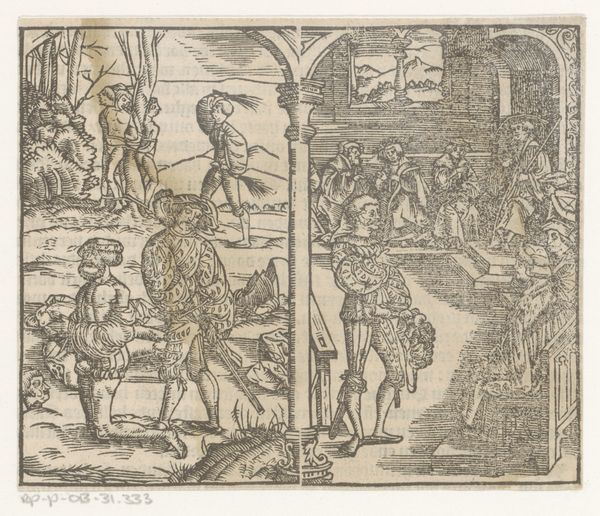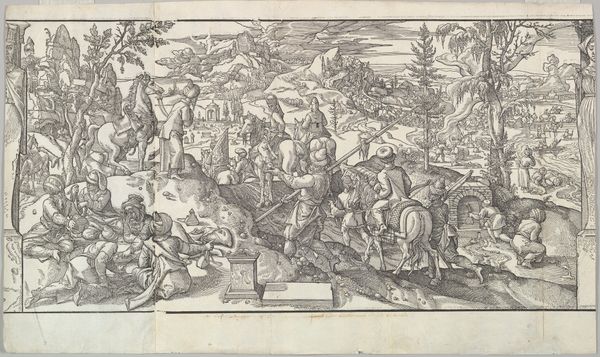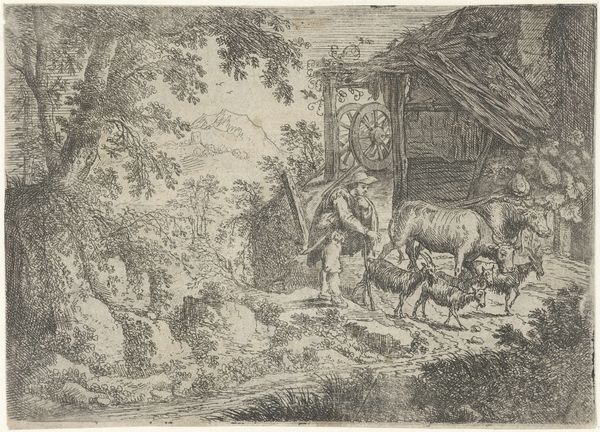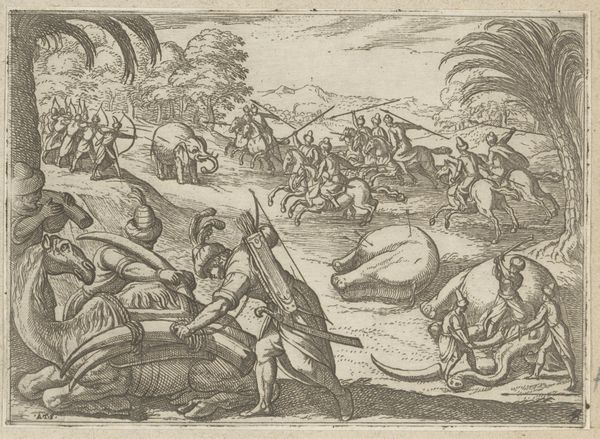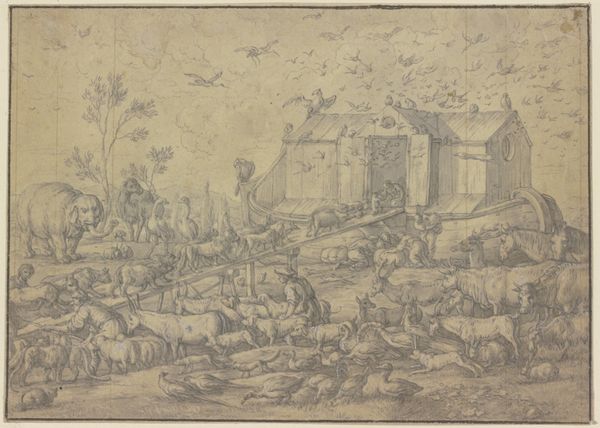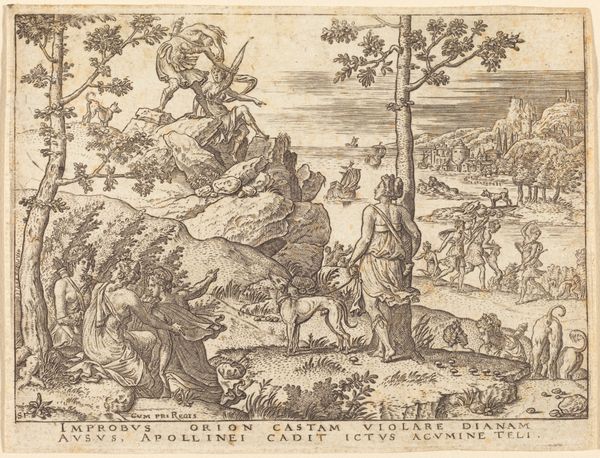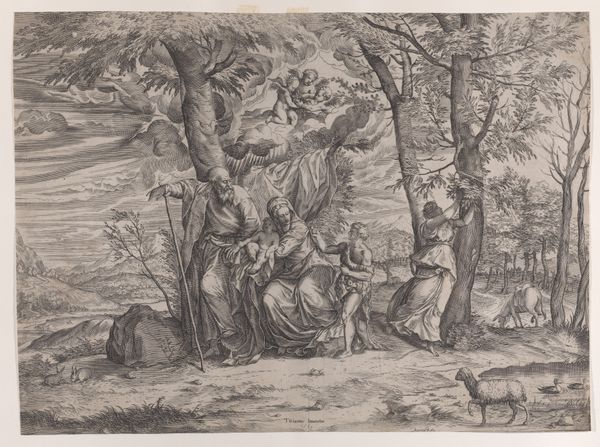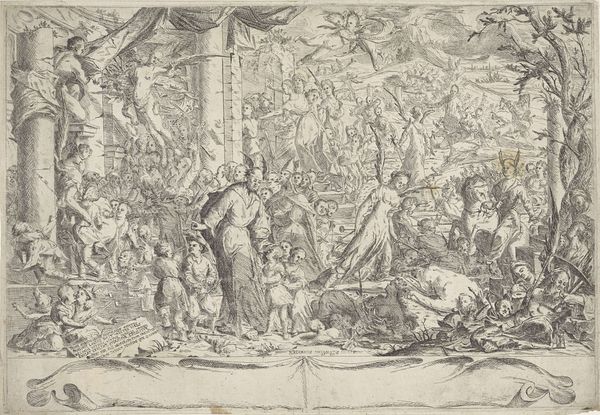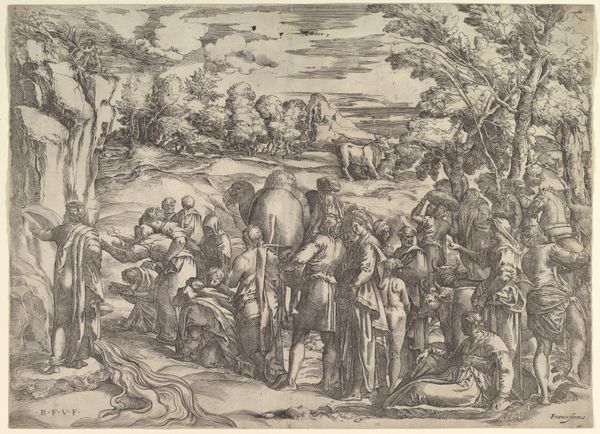
print, intaglio, engraving
#
narrative-art
#
baroque
# print
#
intaglio
#
genre-painting
#
engraving
Dimensions: height 80 mm, width 126 mm
Copyright: Rijks Museum: Open Domain
Editor: This is Jonas Umbach's "Ark van Noach," made sometime between 1634 and 1693. It's a print, an engraving, with some intaglio, and it's currently held at the Rijksmuseum. The scene is teeming with animals, all heading toward the ark. I'm struck by the sheer labor that would've been involved in creating such a detailed piece using these techniques. What stands out to you about this engraving? Curator: The image itself is, of course, important, a powerful narrative. However, focusing on the materials, consider the paper, the inks, the very act of engraving itself. The artist isn't simply depicting Noah's Ark; they're engaging in a process of production, utilizing tools and materials within a specific social and economic context. Editor: So, you're saying the value isn't just in the image, but in the labor involved in creating it? Curator: Exactly. Think about the market for prints in the 17th century. Who was buying them? Were they accessible to all social classes? These prints were commodities, products of a workshop employing skilled artisans. We must examine the labor behind the art, its means of production. This is intaglio—metal being cut and marked to produce these illustrations. That’s an undertaking! How was this one created and by whom? It appears to be an engraving? Editor: It does seem like understanding that historical context of labor gives the artwork another layer of depth and enriches its meaning beyond just the biblical story. Curator: Precisely. We begin to unravel its meanings by studying not just what it depicts but how it came into being as an object. It shows a new story about skill and process! Editor: I never considered that before. Thank you; I will start considering the making process when appreciating art pieces.
Comments
No comments
Be the first to comment and join the conversation on the ultimate creative platform.
